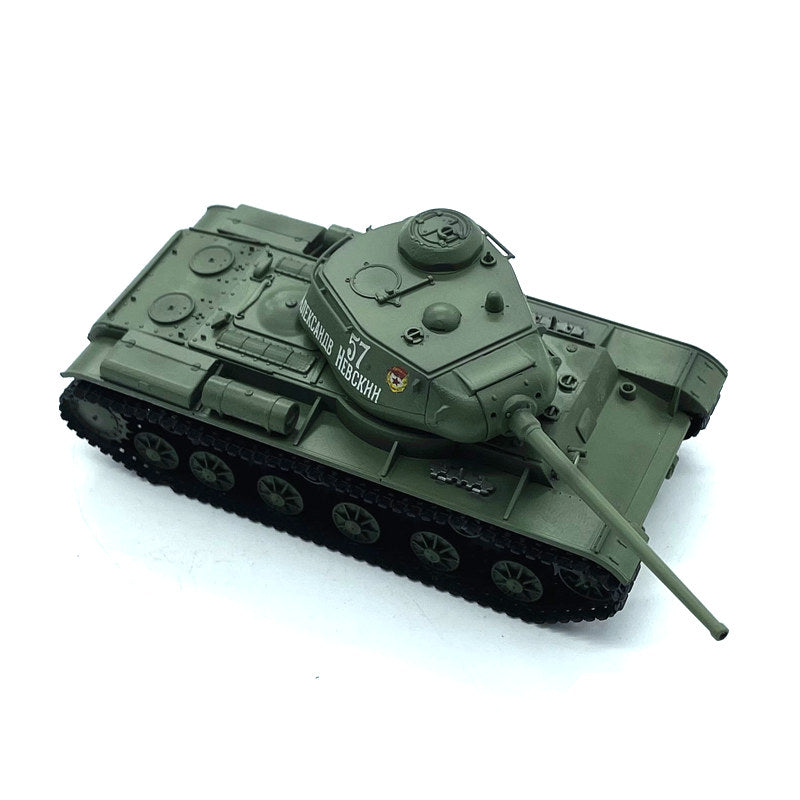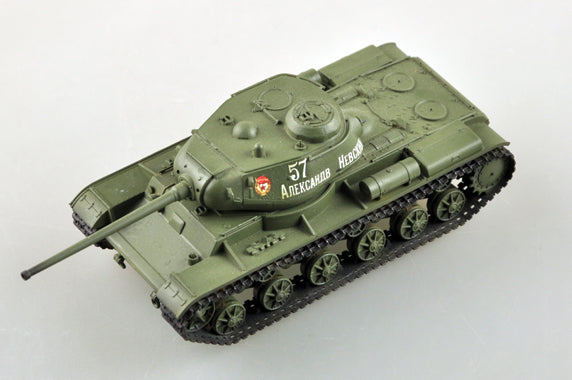old boy hobby
Soviet WWII KV-85 heavy tank pre-built 1/72 scale plastic collectible military model
Soviet WWII KV-85 heavy tank pre-built 1/72 scale plastic collectible military model
Couldn't load pickup availability
- pre-built and pre-painted, ready to display
- material: plastic
- scale: 1/72
- manufacturer sku: 35132
The Kliment Voroshilov (KV) tanks are a series of Soviet heavy tanks named after the Soviet defence commissar and politician Kliment Voroshilov who operated with the Red Army during World War II. The KV tanks were known for their heavy armour protection during the early stages of the war, especially during the first year of the German invasion of the Soviet Union. In certain situations, even a single KV-1 or KV-2 supported by infantry could halt German formations. The German Wehrmacht at that time rarely deployed its tanks against KVs, as their own armament was too poor to deal with the "Russischer Koloss" – "Russian Colossus". The KV tanks were practically immune to the 3.7 cm KwK 36 and howitzer-like, short-barreled 7.5 cm KwK 37 guns mounted, respectively, on the early Panzer III and Panzer IV tanks fielded by the invading German forces. Until the Germans developed more effective guns, the KV-1 was invulnerable to almost any German weapon except the 8.8 cm Flak gun. Prior to the start of Operation Barbarossa in June 1941, about 500 of the over 22,000 tanks then in Soviet service were of the KV-1 type. As the war progressed, it became evident that there was little sense in producing the expensive KV tanks, as the T-34 medium tank performed better (or at least equally well) in all practical respects. In fact the only advantage the KV had over the T-34/76 was its larger and roomier three-man turret. Later in the war, the KV series became a base for the development of the IS (Iosif Stalin) series of tanks and self-propelled guns.
KV-85: A stopgap upgrade to the KV series was the short-lived KV-85 or Objekt 239. This was a KV-1S with the new turret from the Object 237 (IS-85) still in development, mounting the same 85 mm D-5T gun as the SU-85 and early versions of the T-34-85 (not yet in production at the time). The 85 mm proved capable of penetrating the Tiger I from 1000 m and the demand for it slowed production of the KV-85 tremendously, only 148 were built between August and October 1943. Soviet industry was therefore able to produce a heavy tank as well armed as the Tiger I before the end of 1943. Although the KV-85 was an excellent opponent to the Tigers and Panthers, it was a stopgap and thus was built in small numbers. The complete Object 237 was accepted into service as the IS-85 and was produced in the autumn and winter of 1943-44; they were sent to the front as of October 1943 and production of the IS-85/IS-1 was stopped by the spring of 1944 once the IS-122/IS-2 entered full-scale production.
--copied from Wikipedia
Share
















